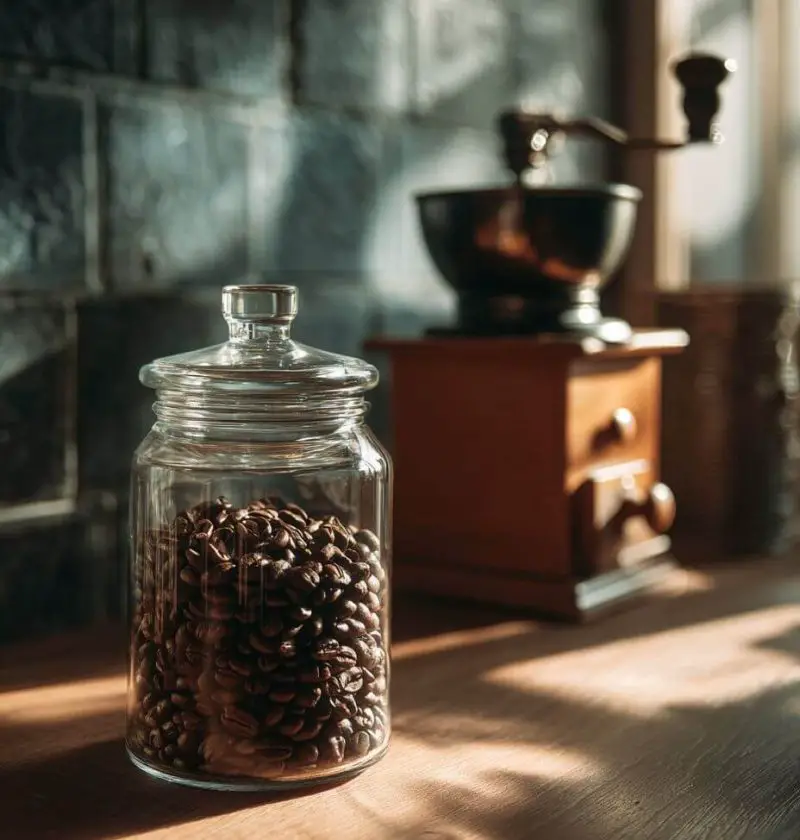Save This Recipe
You know, it took me years (and more than a few stale cups of coffee) to figure this out — but how we store our coffee matters almost as much as the beans we buy. I used to just leave the bag open on the counter, thinking, “Well, I’ll finish it soon anyway.” Spoiler alert: that fresh-roasted flavor faded faster than my motivation on a Monday morning.
If your daily brew has been tasting a little…meh lately, don’t blame your beans just yet. Let’s take a closer look at how you’re storing them. A few small changes can make every cup sing again — rich, bold, and as comforting as your favorite worn-in sweater.
Why You’ll Love This (And Your Coffee Will Too)
-
Your coffee will stay fresher, longer — no more lifeless, flat flavors.
-
You’ll actually taste the lovely notes the roaster promised.
-
You’ll get the most out of those pricey beans you splurged on.
-
It’s simple to do — no fancy equipment required.
The Enemies of Good Coffee: Air, Light, Heat, and Moisture
Let me explain — coffee is delicate. All those yummy aromatic oils and flavor compounds? They’re sensitive little things. The more you expose them to air, light, heat, or humidity, the faster they break down. The result? A cup that tastes like cardboard.
So the goal here is simple: protect those beans like the treasures they are.
Your Airtight Pantry Jar Is a Game Changer
I can’t say this enough — an airtight jar is your coffee’s best friend. Oxygen speeds up oxidation (that’s what makes your beans stale). Look for a jar with a nice tight seal — bonus points if it has a one-way valve to let carbon dioxide out but no air in. You’ll often find those on specialty coffee canisters like the Airscape or Fellow Atmos, but honestly, even a good mason jar will do if you keep it closed.
Avoid plastic if you can — it can hold odors. Go with glass or ceramic, and always make sure it’s clean and bone dry before you pour in the beans.
Keep Coffee Away from That Spice Cabinet
Here’s a sneaky one — did you know coffee beans can soak up the smell of nearby foods? Yep. If you store them next to your turmeric, garlic powder, or cumin… let’s just say your morning latte might come with an unexpected twist.
Give your coffee its own space — ideally, a little shelf or cabinet that’s spice-free and sealed tight. Trust me, you’ll taste the difference.
A Cool, Dark Spot Is Where It’s At
Heat is another flavor killer. And light? It’s not much better. Both can damage the essential oils that give coffee its depth. That sunny kitchen window might look cute with a coffee jar in it, but it’s quietly ruining your brew.
Store your coffee somewhere cool (room temp is perfect — around 68°F or 20°C), dark, and dry. A pantry or closed cupboard away from the oven or stovetop is ideal.
Don’t Trust the Bag — Use a Canister
Unless your beans came in one of those fancy, resealable, foil-lined bags with a valve, the packaging isn’t designed for long-term freshness. Those little wire tabs or zippers just aren’t airtight enough.
Transfer your beans to a dedicated canister with a solid seal. I use a ceramic one with a silicone gasket — nothing fancy, but it gets the job done. And yes, wash and dry it regularly. Old coffee oils can go rancid over time.
Whole Beans > Pre-Ground. Always.
I get it. Grinding ahead of time seems practical. But here’s the thing: once you grind your coffee, you’re exposing way more surface area to air — and the flavor starts deteriorating almost immediately.
If you want to treat yourself (and you should), grind your beans right before brewing. A burr grinder is worth the investment — more consistent grind, better extraction, tastier cup. Blade grinders work in a pinch, but they can be a bit chaotic.
Skip the Fridge (Seriously)
This one surprises people: don’t store your coffee in the fridge. It’s too damp in there. Moisture can sneak into the container and mess with the beans — not to mention the risk of them picking up odors from nearby leftovers (hello, garlic-scented espresso).
The freezer? Maybe. But only if you’re storing beans for weeks and using a vacuum-sealed container. Otherwise, you’re better off keeping them at room temperature and using them up within two to three weeks of opening.
Bonus Tip for Humid Climates
Live somewhere muggy? You might want to add a food-safe desiccant packet (like the ones used in packaging) inside your coffee container. It helps absorb excess moisture. Just don’t let it touch the beans directly.
Let’s Make Every Cup Worth Savoring
I know — it’s a lot to think about for a simple cup of joe. But if you’ve ever sighed in disappointment at your brew, wondering where that fresh-roasted sparkle went… now you know. Proper storage isn’t just a coffee snob’s obsession — it’s how you honor the craft and care that went into those beans.
So next time you scoop from your jar, take a moment to appreciate the aroma — bright, toasty, maybe a little chocolatey or floral. That’s your reward for doing it right.
If you’ve got a coffee storage trick I missed or a favorite airtight container you swear by, I’d love to hear about it in the comments. Or hey, just tell me how you take your coffee — black, with cream, iced, frothy, sweet… however you love it, it’s worth brewing well.

